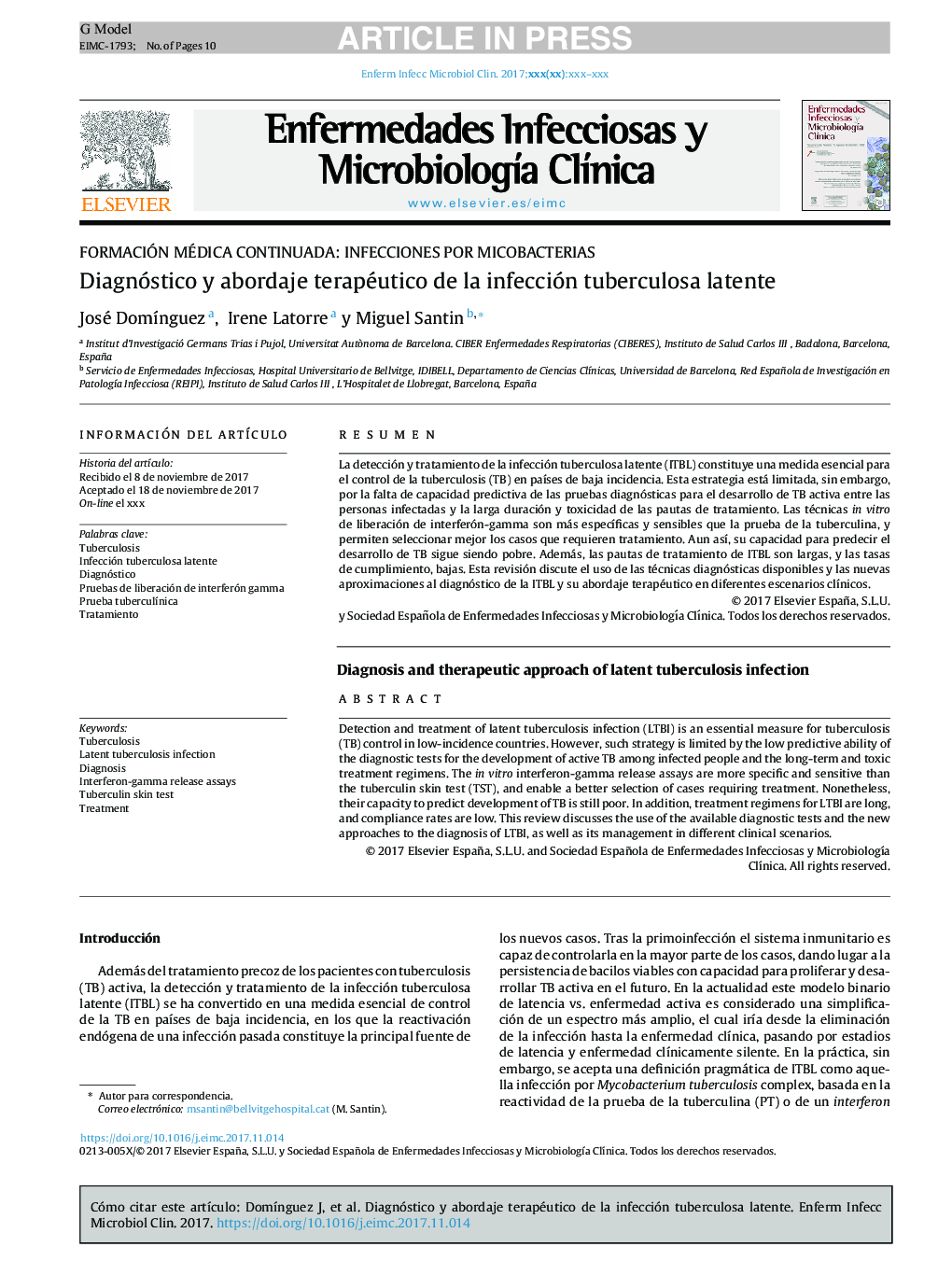| Article ID | Journal | Published Year | Pages | File Type |
|---|---|---|---|---|
| 8745433 | Enfermedades Infecciosas y Microbiología Clínica | 2018 | 10 Pages |
Abstract
Detection and treatment of latent tuberculosis infection (LTBI) is an essential measure for tuberculosis (TB) control in low-incidence countries. However, such strategy is limited by the low predictive ability of the diagnostic tests for the development of active TB among infected people and the long-term and toxic treatment regimens. The in vitro interferon-gamma release assays are more specific and sensitive than the tuberculin skin test (TST), and enable a better selection of cases requiring treatment. Nonetheless, their capacity to predict development of TB is still poor. In addition, treatment regimens for LTBI are long, and compliance rates are low. This review discusses the use of the available diagnostic tests and the new approaches to the diagnosis of LTBI, as well as its management in different clinical scenarios.
Keywords
Related Topics
Life Sciences
Immunology and Microbiology
Microbiology
Authors
José DomÃnguez, Irene Latorre, Miguel Santin,
